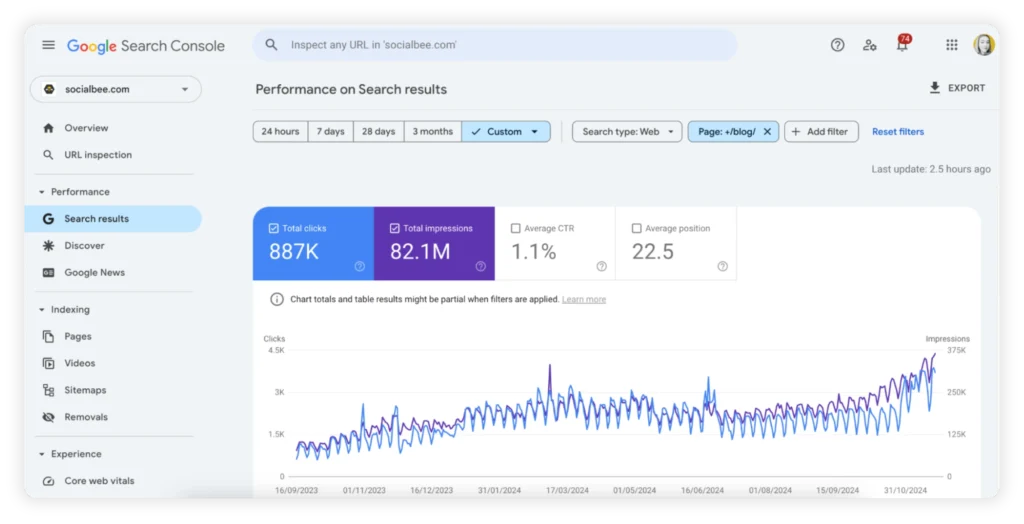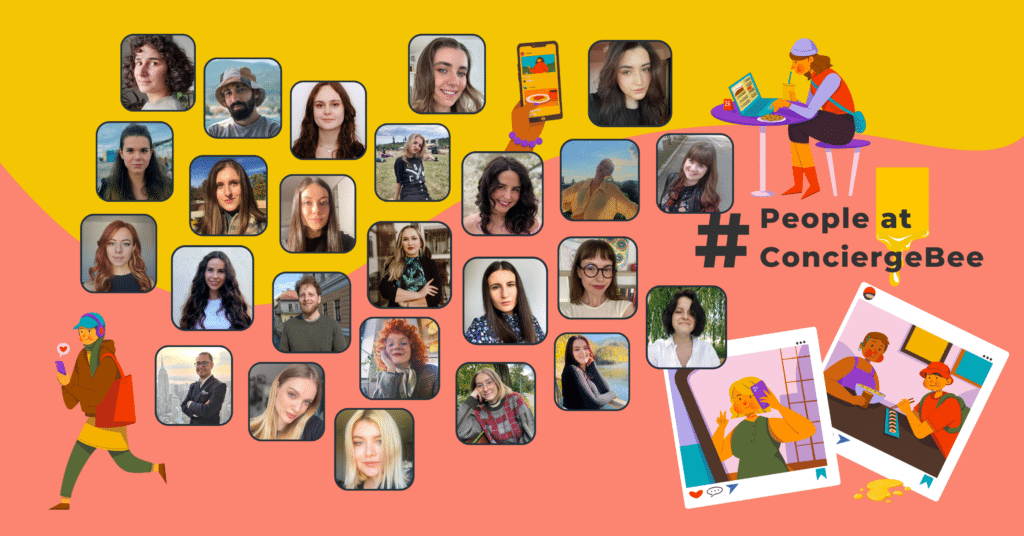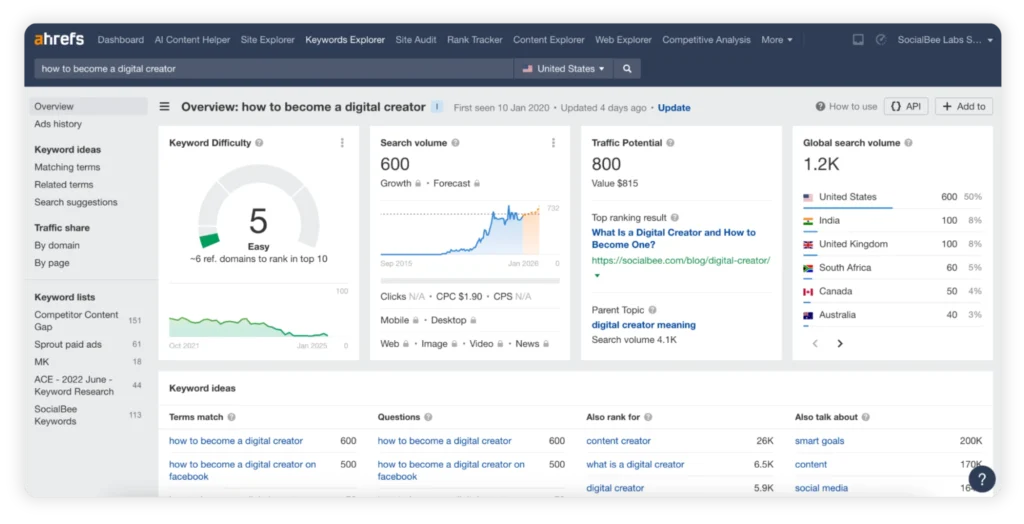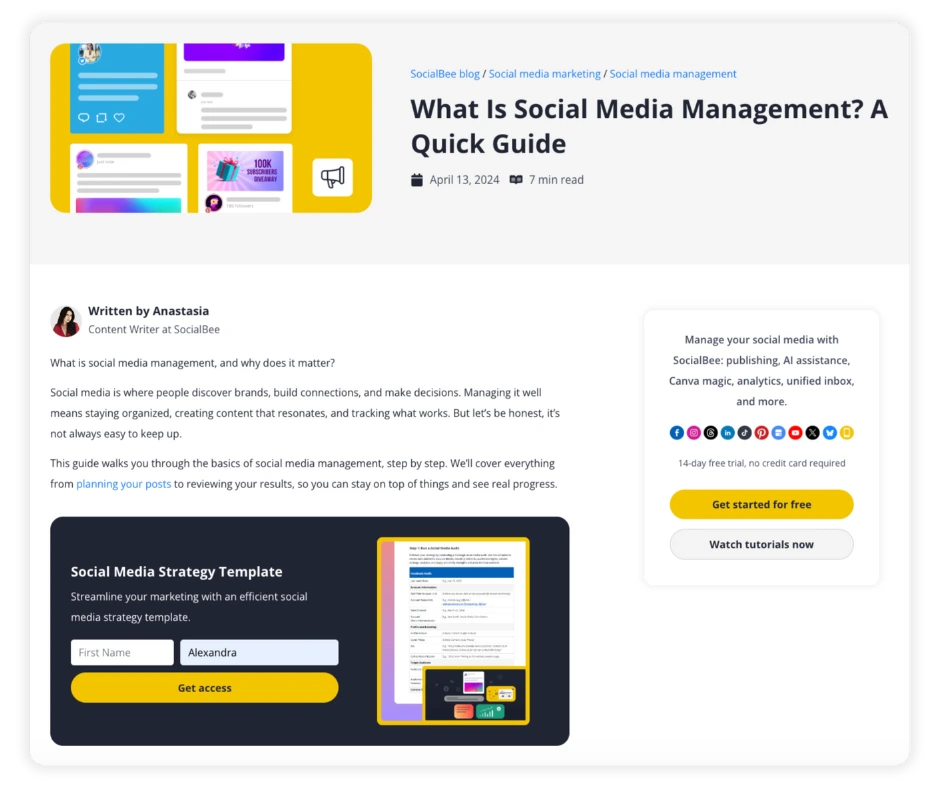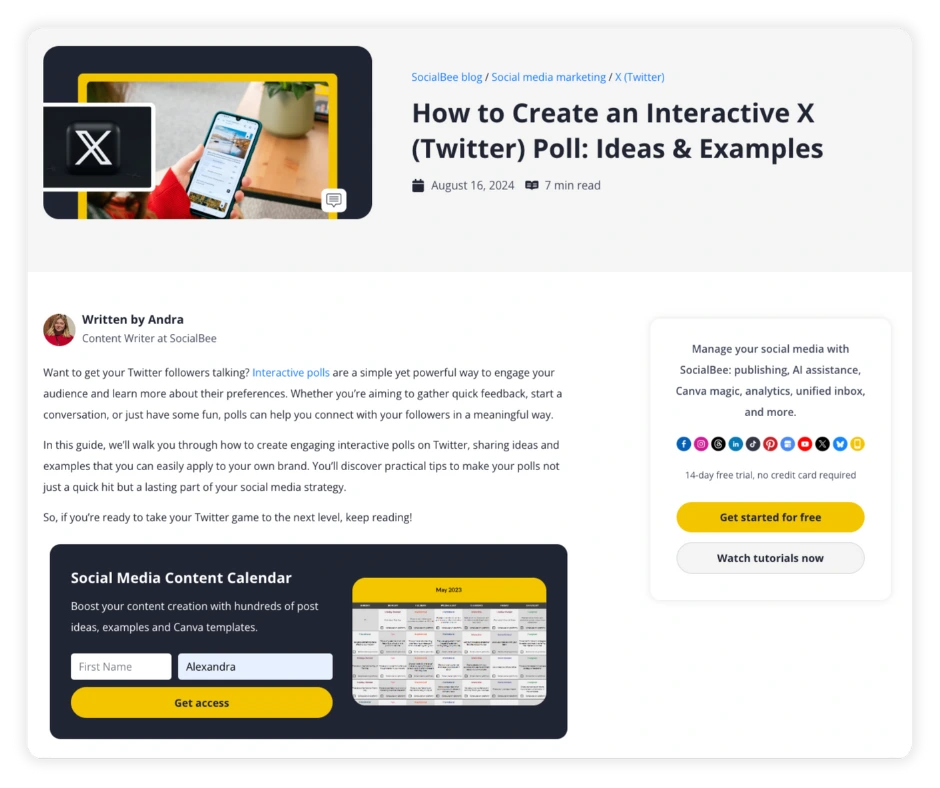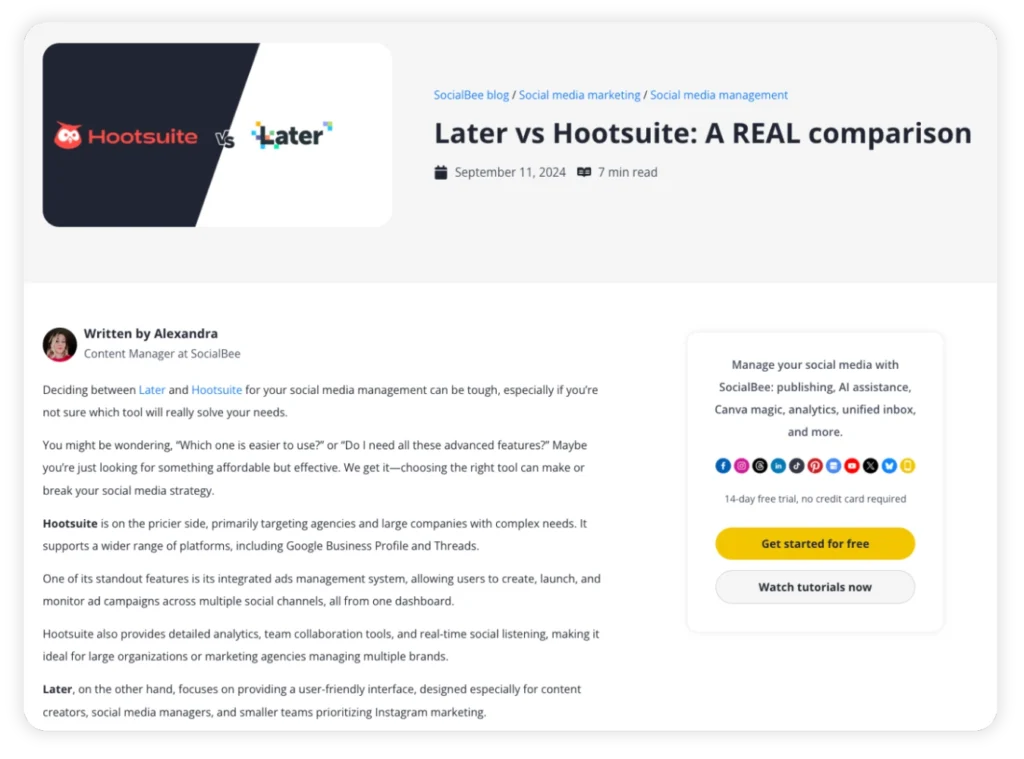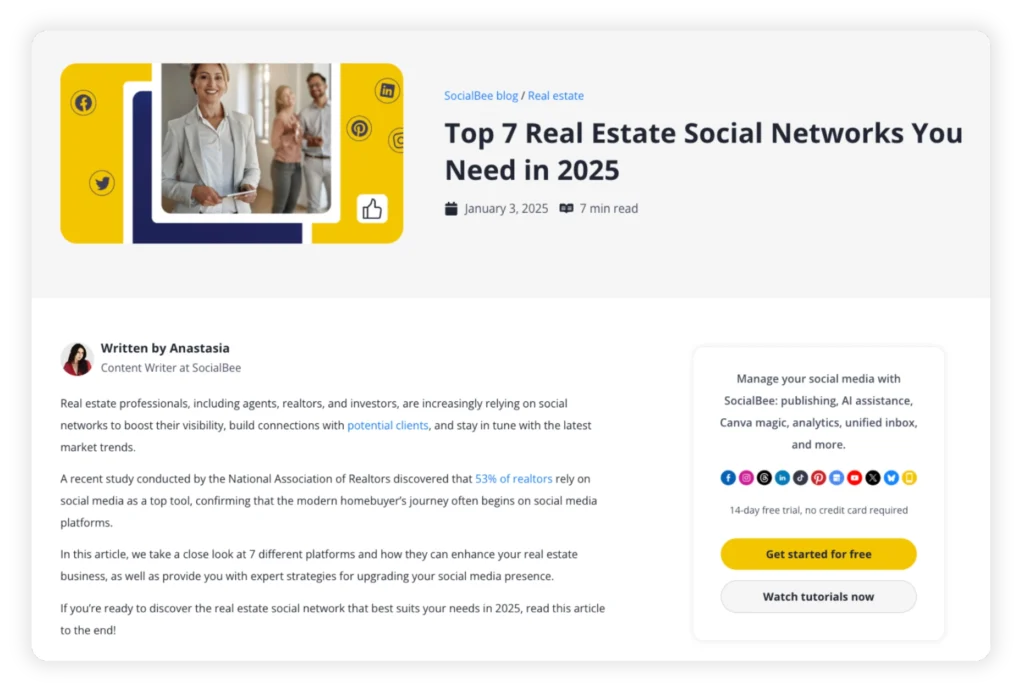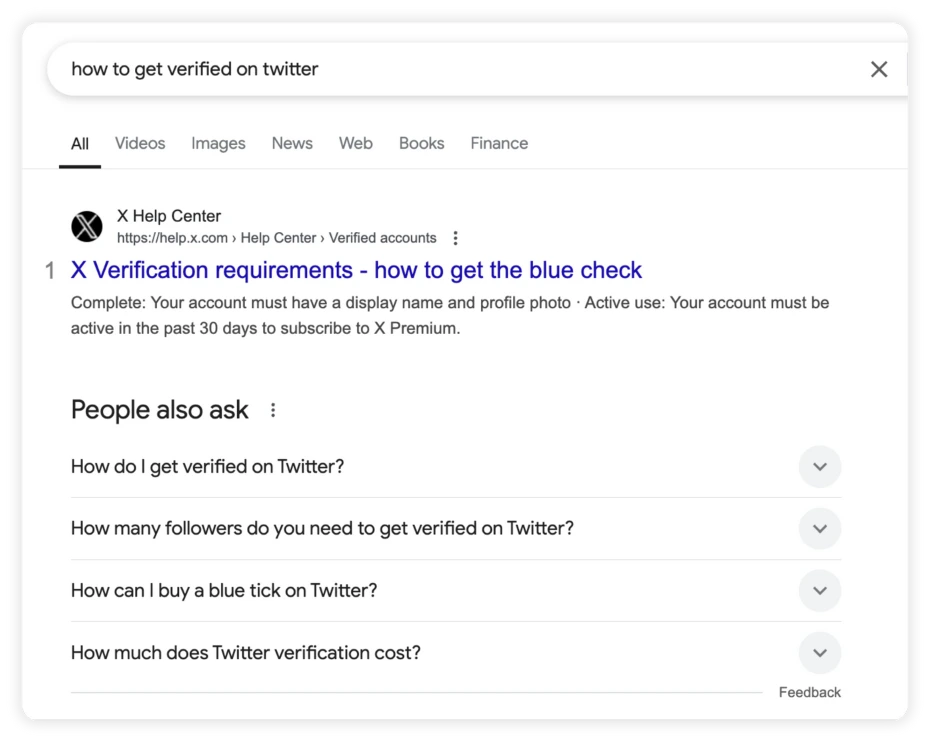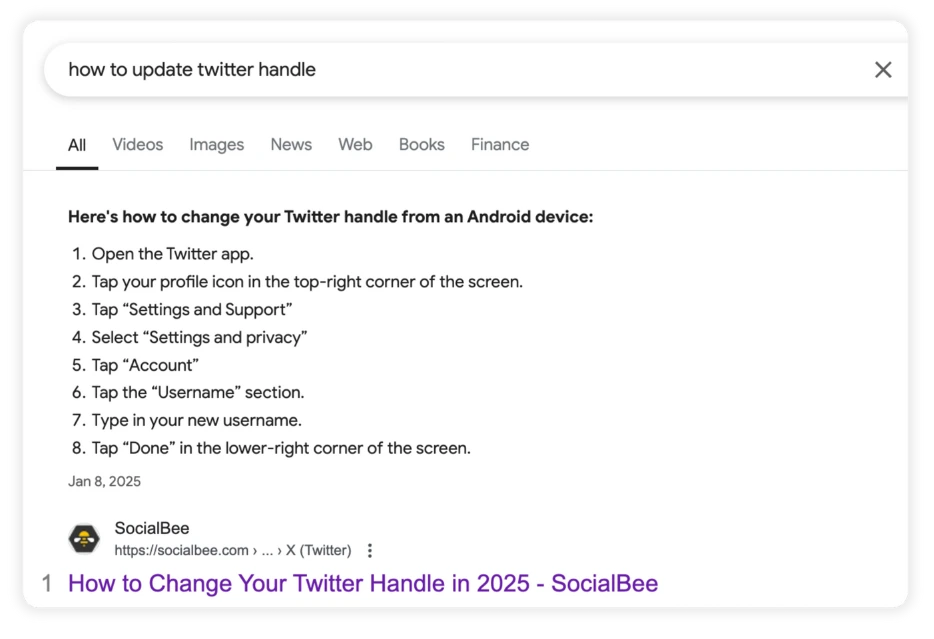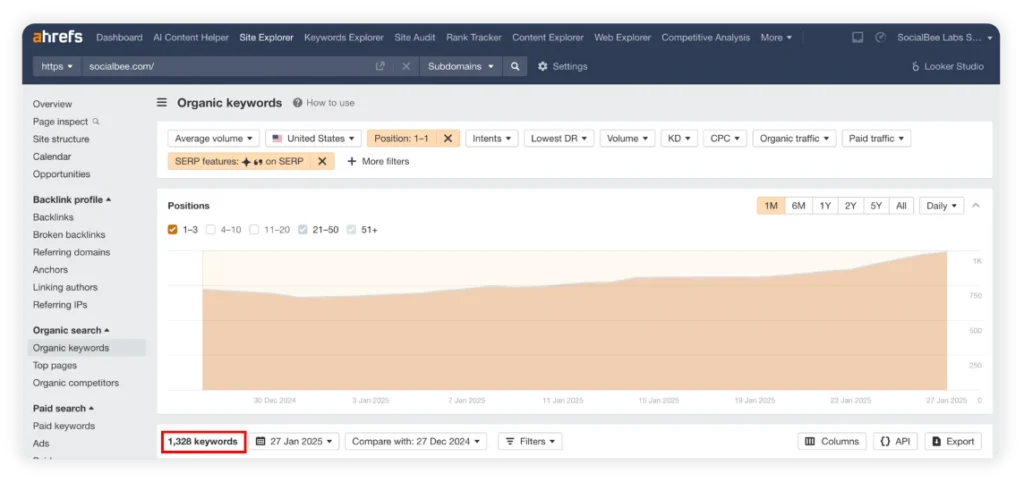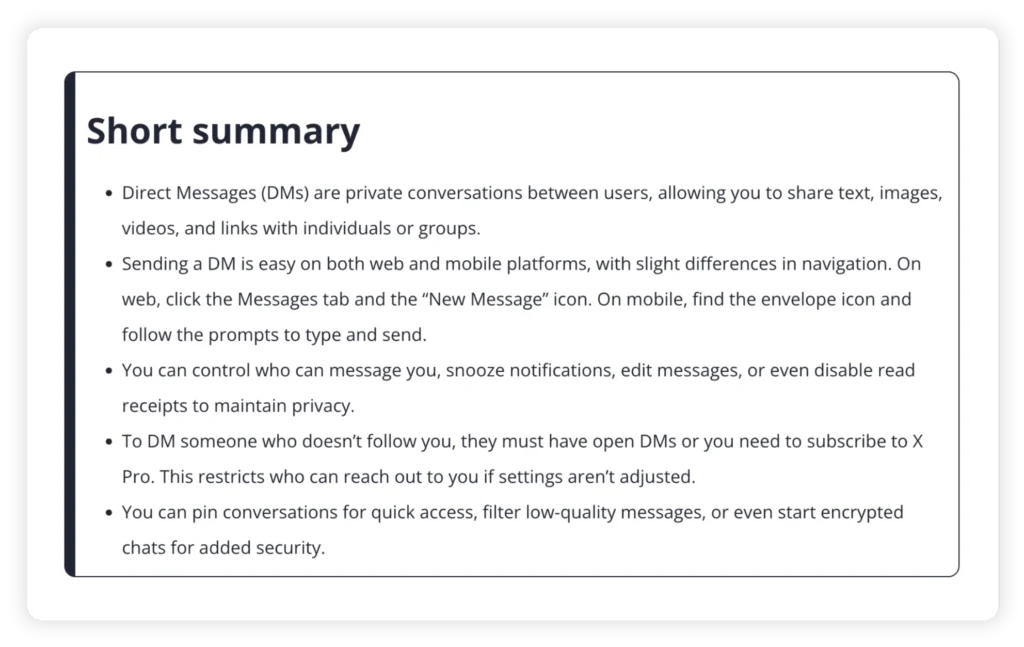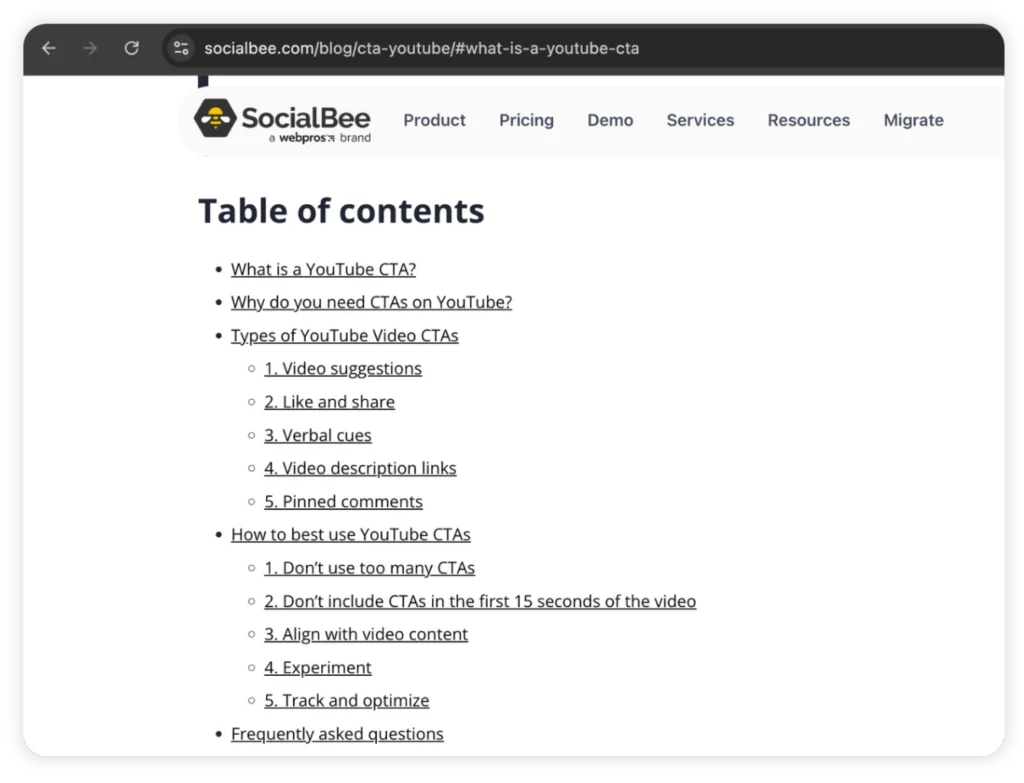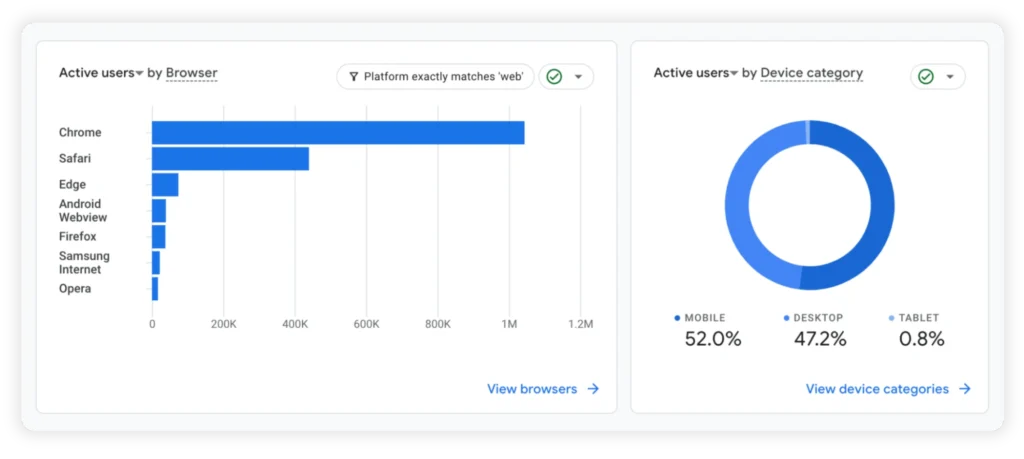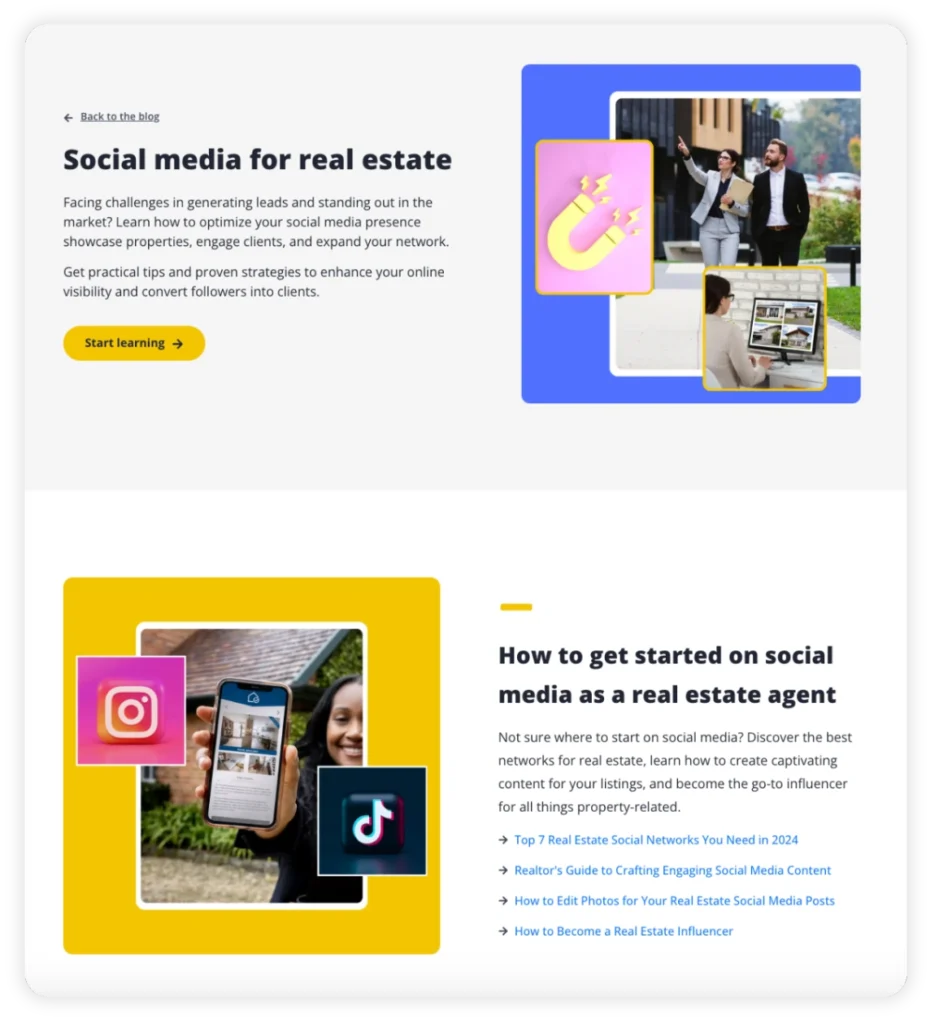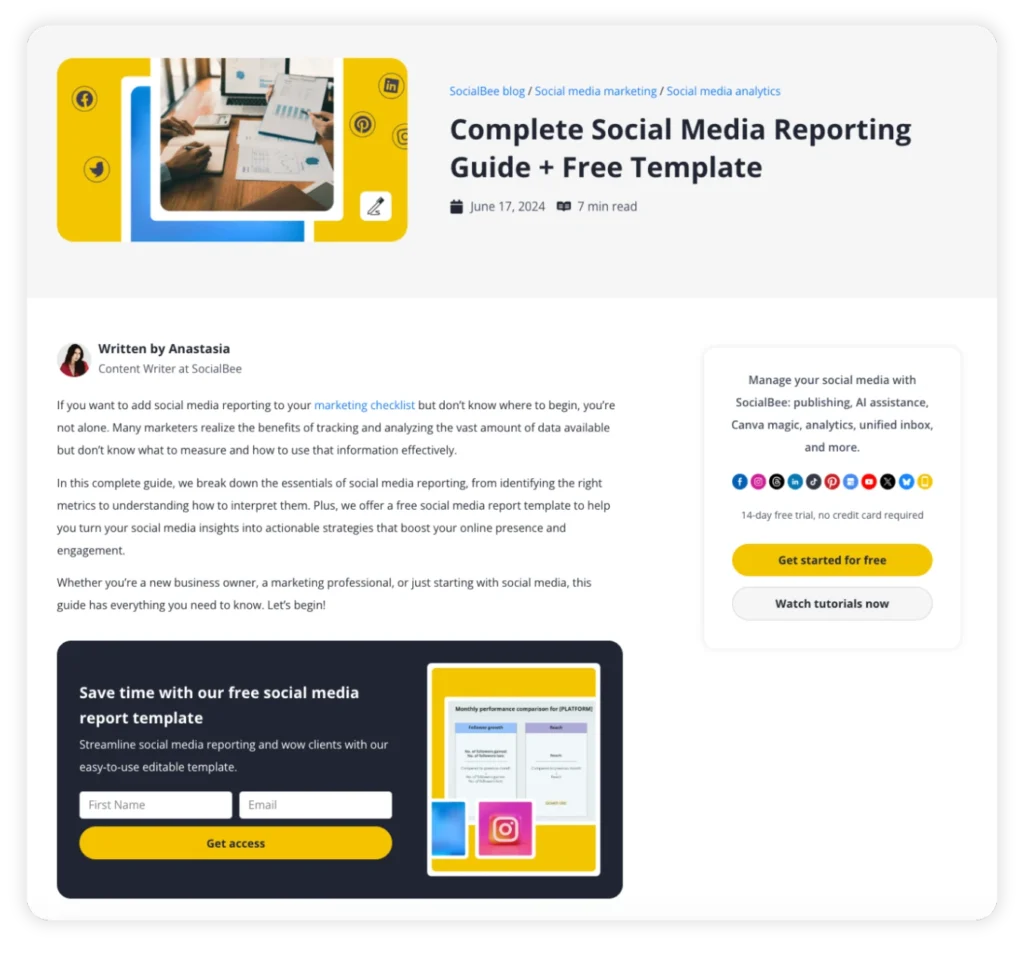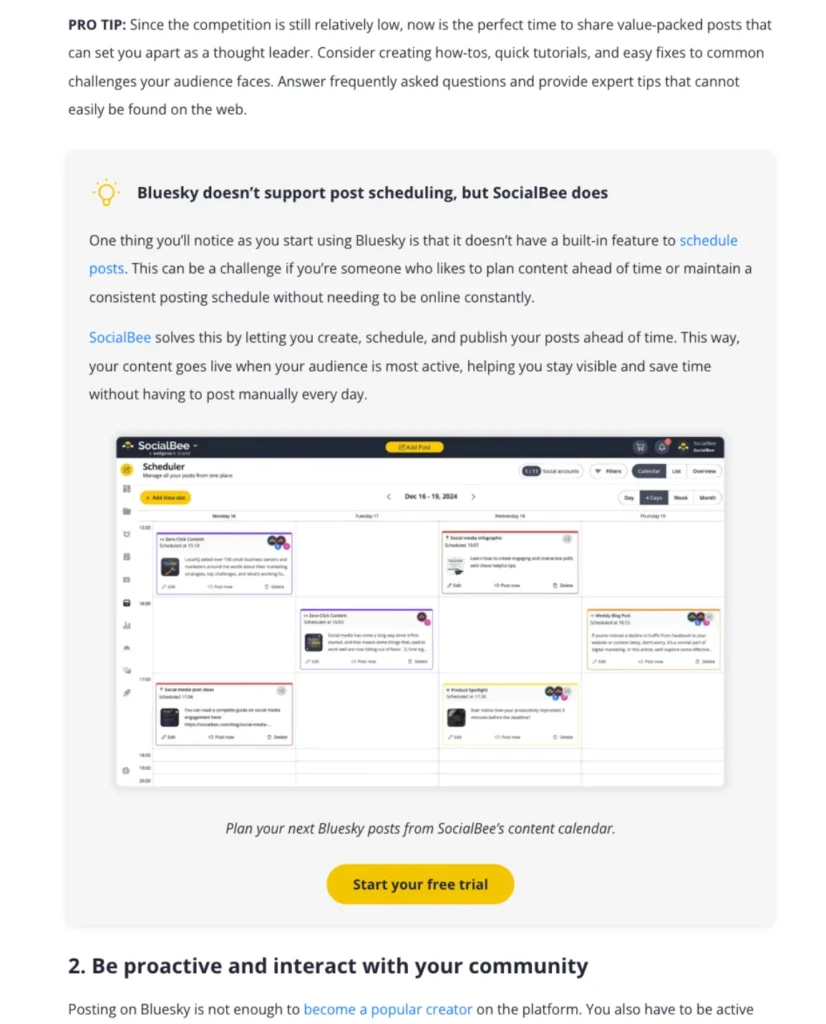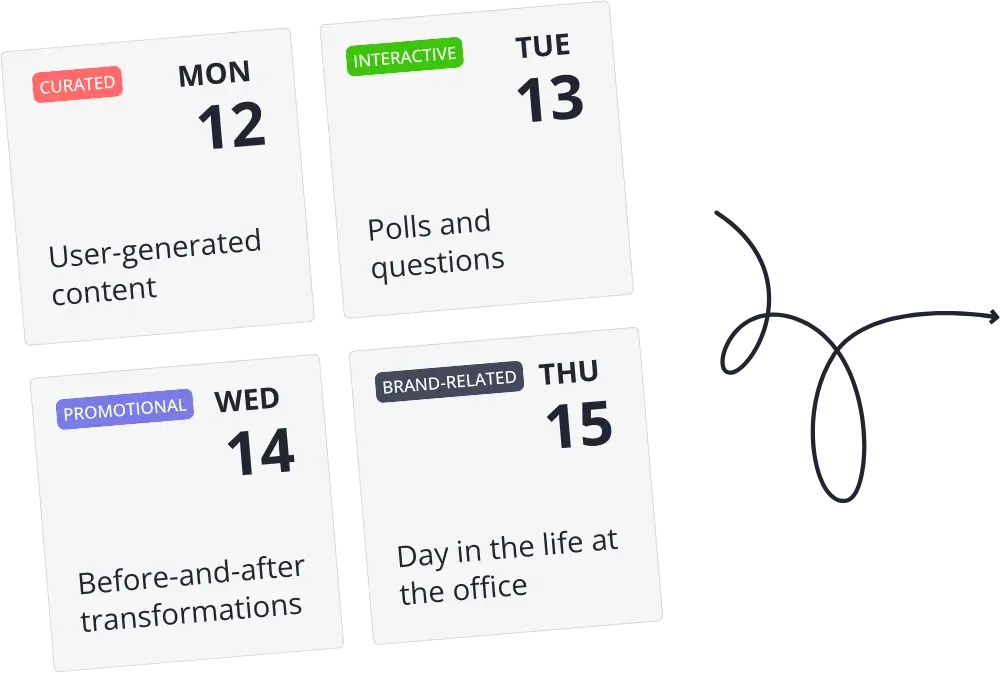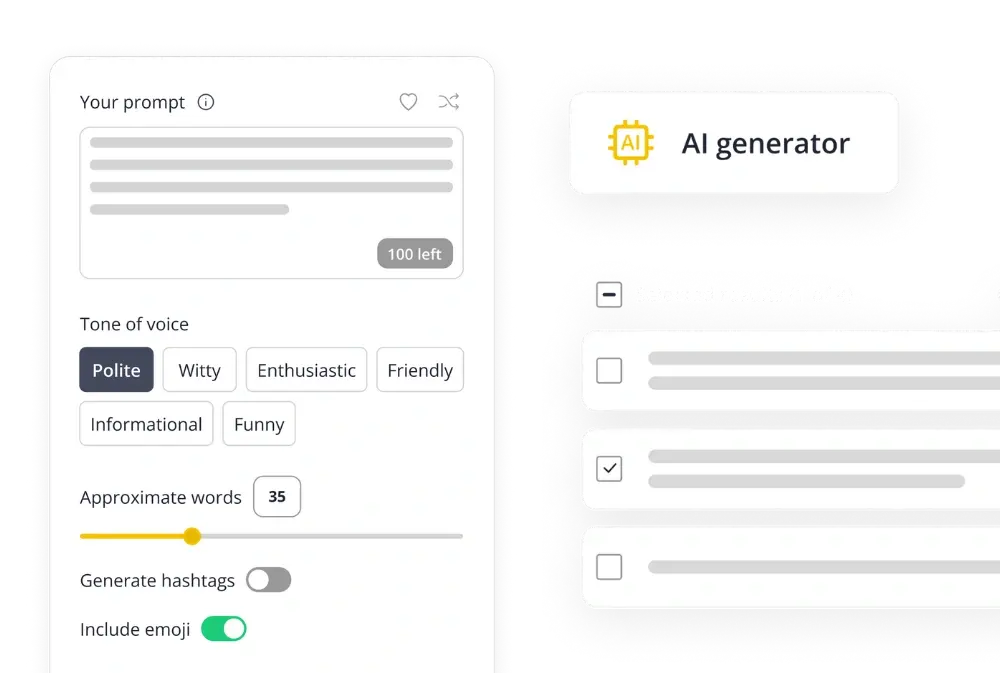How we doubled our blog traffic in one year with ConciergeBee’s services

1,005,969
pageviews
828,000
Google clicks
173,393
new subscribers
In 2024, despite the wave of Google updates that shook websites around the globe, we managed to double our blog traffic. And before you ask, yes, we’re going to share exactly how we did it.
Our page views jumped from 402,848 (with 352,010 unique views) in 2023 to 1,047,834 in 2024 (772,789 unique views).
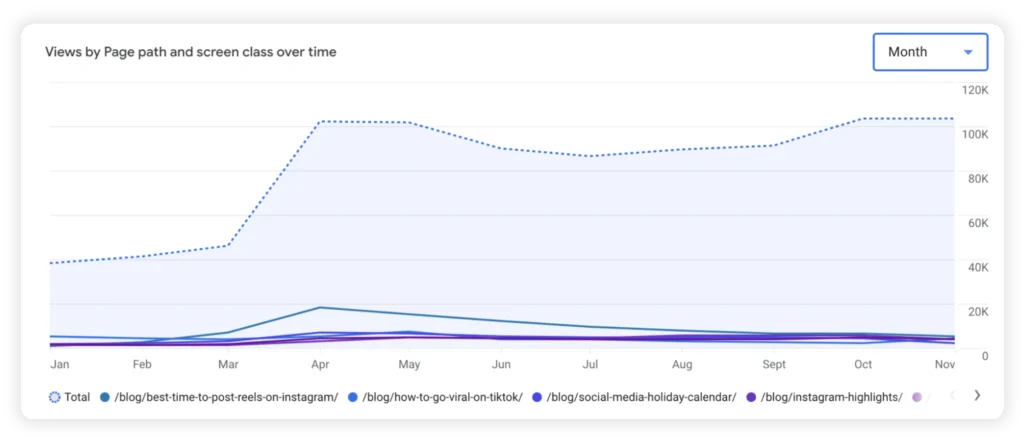
Organic search has always been a key driver of traffic for us. While our clicks have been consistently strong, we saw a noticeable surge in growth, especially in the second half of 2024.
So, what’s the secret? We teamed up with the ConciergeBee writing team to deliver constant value to our readers. Our content focused on helping our audience reach their social media goals with how-tos, expert tips, guides, and templates. At the same time, we showed how our product could solve their challenges and make their lives easier.
This strategy didn’t just boost our traffic, it also translated into better results across the board in 2024:
- 100,156 people started trials of our product, compared to 52,073 in 2023
- 173,393 new subscribers joined our email newsletter, nearly doubling the 94,758 we gained the year before
Do you want the same results?
Our strategy is simple: no secret formulas or complicated shortcuts, just classic organic content marketing that works long term. It’s all about targeting the right audience with the right content and delivering value.
You might think this sounds like a long-term commitment requiring consistency, time, and resources, things you may not have right now. That’s not a problem. We can introduce you to the same experts who’ve helped us grow.
Meet ConciergeBee, SocialBee’s agency that connects you with expert content writers and marketing specialists. They handle everything from article writing and social media content to email copywriting, community management, ads, and more.
We’ve used the Content Machine service to create weekly SEO-optimized articles and regularly update older content to keep it competitive.
Here’s what ConciergeBee’s Content Machine service includes:
- Up to 12K words per month
- Keyword research
- SERP analysis
- SEO-structured articles
- Content gap analysis (you vs. competitors)
- Optimization of non-ranking existing content
- Publishing
- Custom featured images
- Social media posts
- Monthly reports
The benefits? You don’t have to worry about managing content creation anymore. Plus, you’ll see increased traffic from SEO-optimized content. And here’s the best part: you won’t need to invest in expensive SEO tools because ConciergeBee’s writers have everything they need to handle research, optimization, and monitoring for you.
When you are a 360-degree digital marketing agency you need to find reliable partners for specific areas of your work. We used freelancers here and there or wrote the content ourselves until we decided we needed a reliable partnership. ConciergeBee.
If I were to describe ConciergeBee's experts, I’d say that they're professional, go the extra mile, no hassles along the way.
Most of the time we do not require any changes, the content is ready to go live. We know that content writing is the kind of job that requires a skilled voice and quick delivery. They deliver fast each time and incorporate feedback quickly. Efficient as bees!
Romeo Man, Managing partner at MAN Digital
How we doubled our blog traffic in a year
Do you want to learn more about our blog content strategy and process? Let’s take it step-by-step.
Step 1: Target the right searches and build a strategic list of keywords
When deciding what to write about, the first question you’ll face is: “What should I focus on?” It’s not as simple as picking a random topic from your industry. To drive traffic to your site, you need to target topics your audience is actively searching for.
The key to success here is a data-driven approach. SEO tools like Ahrefs can help you uncover which terms are popular and relevant. You’ll want to focus on keywords that have:
- Decent search volume (indicating interest)
- Manageable keyword difficulty (so you can rank without too much difficulty)
Your goal is to find keywords with enough search volume to be worthwhile, but not so much competition that ranking becomes nearly impossible.
At the same time, these keywords should be closely tied to your niche. They need to align with your products or services. This way, your content not only answers your audience’s questions but also gives you an opportunity to showcase your expertise and promote your products or services.
Understanding TOFU, MOFU, and BOFU keywords
When you’re planning content, it helps to think about the different stages people go through before making a decision: TOFU, MOFU, and BOFU. Each stage needs a slightly different type of article.
TOFU (Top of the Funnel) Keywords
- Customer stage: At this stage, people are just starting their journey. They might not know exactly what they’re looking for yet, but they’re curious and exploring options to learn something new, achieve a goal, or understand a topic better.
- Example content: At this point, people need basic info. Posts that explain things like “What is [topic]?” or “What are the benefits of [topic]?” work really well.
What Is Social Media Management? A Quick Guide
MOFU (Middle of the Funnel) Keywords
- Customer stage: People here are more focused. They know what they want to achieve and are actively looking for ways to do it. They’re exploring solutions, strategies, or methods to reach their goals, though they may not be ready to make a purchase yet.
- Content type: You’ll want to create content that helps them figure out how to solve their problem. This might include posts like “How to [do something/overcome challenge]”, “Tips for [achieving goal]”, or “Guide to [doing action] for [target audience].”
How to Create an Interactive X (Twitter) Poll: Ideas & Examples
BOFU (Bottom of the Funnel) Keywords
- Customer stage: At this stage, people are clear about their goals and what they need to achieve them. They’re evaluating specific options and making final comparisons to decide which product, service, or solution is the best fit for their needs.
- Content type: Content here should focus on helping people make the final decision. This could include comparisons, lists of alternatives, or reviews, like “Alternatives to [product]”, “Best [product/service type] for [target audience]”, or “[Tool 1] vs [Tool 2] comparison.”
Later vs Hootsuite: A REAL comparison
How to get ideas for keywords
We started by thinking about how people actually use our products. What problems are they trying to solve? What are they searching for? Knowing this helps us create content that’s really useful for them.
We then listed out the topics that matter most. We cover things like building a social media strategy, coming up with content ideas, scheduling posts, becoming a social media manager, etc. We also created niche content, focusing on specific target audiences. This allowed us to speak directly to customer personas and provide them with customized tips.
Then, we used Ahrefs to find long-tail keywords related to broader terms like “social media scheduler”, such as “how to schedule posts on [platform]” or “best scheduling tools for the [platform].” This gave us more specific, less competitive keywords that are easier to rank for and attract targeted traffic.
By organizing these keywords in a spreadsheet and sorting them into buckets directly related to our industry and products, we created a content roadmap that keeps us focused.
Pro Tip: We also checked out our competitors. With Ahrefs, we could see what keywords they rank for and which pages bring in the most traffic. This helped us spot gaps in their content and figure out how to do it better.
Step 2: Set up a consistent posting schedule
Now that you know what you’re going to write about, the next step is deciding how often you can realistically post each week and setting specific publishing days. The key here is consistency. The more you post, the more chances you have to reach your audience and bring traffic to your site.
Step 3: Optimize for SEO and user experience
When optimizing for SEO and user experience, we focused on strategies that not only improved our rankings but also made our content more useful and accessible to readers. These steps helped us drive more traffic, get featured in Google snippets, and rank on the first page of search results.
Here’s what worked for us and how you can apply the same principles to your content.
A. Write a clear title & meta description
Make sure your title and meta description are clear and relevant. Keep the title under 55 characters and include your main keyword early, so both search engines and people can quickly tell what your page is about. Your meta description should be between 140-160 characters and give an accurate, engaging snapshot of the content.
B. Use keywords strategically
Keywords are important, but it’s all about balance. Use your main keyword in the title, introduction, headings, and a few key spots throughout your content, but don’t overdo it. Instead, focus on making your content useful and natural, letting the keywords guide what topics to cover.
Also, include related terms and variations to help your content rank for a wider range of search queries.
C. Answer common questions & get featured in snippets
People often search for answers to specific questions, so if you can provide those answers, it’ll help your SEO. You can find these questions by browsing platforms like Quora or Reddit, or even using Google’s “People Also Ask” feature.
If you can address questions that haven’t been answered yet or go into more detail than other sites, it gives you a real opportunity to stand out in search results.
Google snippets are the small, highlighted answers that appear at the top of search results. To increase your chances of being featured, answer common questions directly and clearly. Use headings like “How to bake a cake” to frame the key question as part of your content. Then, provide a short, concise answer right below the heading.
Keeping your answers around 320 characters in short paragraphs boosts your chances of being selected for snippets. Alternatively, use lists if they’re a better fit for the question. Google may prefer one format over the other depending on the content.
To decide on the answer format you’ll use, check Google to see what type of snippet appears for similar queries. Also, Google has started experimenting with AI Answers (AI Overviews), which pulls answers directly from content and links to full articles. This creates another opportunity for your content to be featured as a source.
At the moment, we are featured in more than 1,300 Google snippets and AI answers.
D. Keep content easy to read
To make your content easier to read, break up long paragraphs, use bullet points, and add clear headings (H1, H2, H3). Keep sentences short and simple, so people can quickly scan and find what they need without getting lost.
A quick TL;DR section at the beginning is also helpful, it gives readers the main points right away, which is great for those in a hurry and can even help your content show up in Google snippets.
Another useful tip is adding a table of contents (TOC) with jump links. This makes it easy for readers to go straight to the sections they care about.
For SEO, a TOC helps search engines understand and index your content better. Plus, it makes your site more user-friendly and intuitive.
E. Make sure your content is responsive across devices
Since most people now browse the web on their phones, it’s essential that your site is mobile-friendly so it captures that traffic. For instance, most on the traffic on our website comes from mobile devices.
Make sure your design adjusts to different screen sizes and that all the text is easy to read without zooming. Test your site on mobile to make sure it looks good and works well. Google’s ranking algorithm also prioritizes mobile-friendly sites, so this will help your SEO too.
F. Optimize page speed
A fast website is crucial. If your pages take too long to load, people will leave, and that could hurt your SEO. Compress your images, clean up any unnecessary code, and keep things simple so your site loads quickly. A faster site keeps visitors happy and helps you rank better in search results.
G. Use internal links and breadcrumbs
Internal links are a simple way to improve navigation and keep people on your site longer. Linking to related articles within your own site can help users find more useful information and also helps search engines understand your site’s structure.
Try to include internal links every 200 words or so if your content supports it. This keeps things flowing and adds more value to your visitors.
Breadcrumbs are a small but helpful feature that shows users where they are on your site and how they got there. It also helps search engines understand your site’s structure, which can improve your rankings.
H. Create content hubs for better navigation
Content hubs group related articles around a central topic, making it easier for users to find what they’re looking for. For instance, here is our content hub with articles about social media for real estate:
By linking to related pages from a central pillar page, you create a logical structure that helps both visitors and search engines navigate your site. It also keeps users engaged, encouraging them to explore more of your content.
Step 4: Offer free lead magnets
At SocialBee, we share free resources that anyone in our audience can download. These are practical tools designed to help people in our industry with exactly what they need. Our audience includes solopreneurs, small businesses, and organizations looking to do better on social media.
We offer things like guides, content calendars with ready-to-use ideas, Canva templates for creating great visuals, social media strategy templates to give them a solid starting point, and even reporting templates to track their progress. These templates are right at the start of our articles, so they’re easy to find and grab.
Complete Social Media Reporting Guide + Free Template
Why do we do this? It’s a win-win. These resources are genuinely helpful for our audience, and at the same time, they help us grow.
When someone downloads a resource, they share their email with us. That lets us send them helpful newsletters, introduce our products and services, and stay in touch. Over time, we build relationships and turn some of those leads into customers.
Step 5: Promote your products and services contextually
When planning your blog content, it’s essential to think about how your new posts will help promote your services. From the beginning, keep your product or service use cases in mind.
For example, SocialBee is a social media management tool. Its key features include creating content, generating posts with AI, scheduling and publishing content, replying to comments, mentions, and messages, collaborating with team members, and monitoring content performance.
Naturally, our content focuses on these core areas. We write about topics like building a social media calendar, scheduling posts on different platforms, and tracking key social media metrics to measure performance. While most of this content is educational, we also identify opportunities to address customer pain points and position SocialBee as the solution.
To make your promo even more effective, include images or examples of your product in action. Add links to your sales pages so they’re easy to find, and use a strong call-to-action (CTA) that offers value. For example, we offer a 14-day free trial. If you provide services, you might promote a free consultation instead.
We also publish listicles focused on searches people make when they’re ready to choose a tool, like the best schedulers, content planners, and content calendars. The idea is to show SocialBee from different angles, so anyone searching for a tool like ours could see how it fits their specific needs.
This approach helped us reach more people and connect with those who were actively looking for a solution. In fact, a lot of customers tell us they found us through Google searches.
Step 6: Monitor and update older content
The search results are always changing, so your pages and posts will rise and fall based on trends, how often people search for certain things, and new content that gets published. Google updates also play a big role in how things perform. That’s why, we try to update at least two older articles per week.
To stay on top of it, you’ll need tools like Google Search Console (GSC), Google Analytics (GA), and SEO tools like Ahrefs. These give you a clear picture of what keywords you’re ranking for and show how your performance compares to last month, so you can see what’s working and what’s not.
From there, it’s time to audit your content. Look at what needs updating or improving. You might need to refresh information, adjust for new trends, or learn from what your competitors are doing.
We use Surfer SEO to run content audits and get keyword recommendations. It also helps us figure out things like article structure, word count, headings, image use, page speed, and other SEO factors that can boost content performance.
Step 7: Promote your content on other platforms
Once you publish your content, it’s up to you to promote it. Be your biggest fan and share it as much as possible. A good place to start is by sharing your blog posts on social media. You can turn them into content people can save for later, or create short posts that grab attention and make people want to click.
Don’t forget about platforms like Pinterest. We’ve had great success turning our blog content into visual resources, things like post ideas, tips, and AI prompts, anything people are likely to save and come back to. It’s also great for SEO since Pinterest boards can be indexed on Google.
Pinterest helped us get 291K impressions, 15K interactions, 700 clicks, and 3.4K saves in 2024.
We made sure to optimize our boards for search by creating titles that focused on what people were searching for. For example, since we have articles about content ideas, we created boards like “Social Media Post Ideas” and grouped our content in a way that made it easy for people to find what they were looking for.
From every post, we make sure to link back to our articles and turn the reach we get from Pinterest into blog traffic.
Ready to replicate our success?
If you’re looking to boost your blog traffic, generate more leads, and create a long-term strategy that works, ConciergeBee is your go-to partner.
With services like their Content Machine, you’ll have access to expertly written articles, SEO research, and everything you need to stay ahead of the competition.
Don’t waste time figuring it all out on your own. Let ConciergeBee handle the heavy lifting so you can focus on growing your business.
ConciergeBee really took the time to get to know what my needs were. I was super impressed with the first article they wrote; I only had to make a few minor tweaks.
They really got my messaging through all the questions they asked on the intake form. They outlined my business better than I have. ConciergeBee nailed it!
Esther Gambrell, Owner of Shining Star Studios
Want to boost your blog traffic without the stress of content creation? Let ConciergeBee handle it all.
✅ SERP analysis
✅ Keyword research
✅ Competitor evaluation
✅ SEO-structured articles
✅ Monthly reporting
